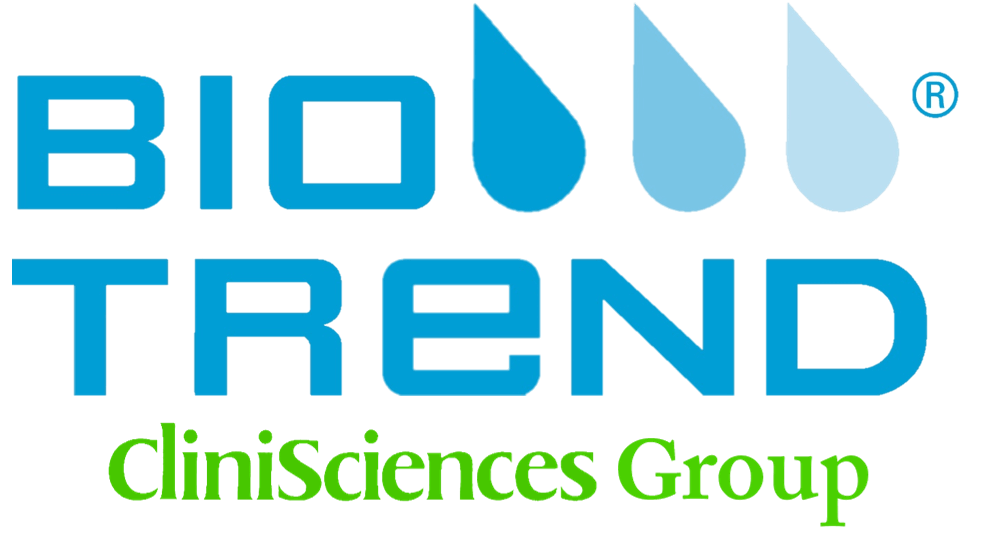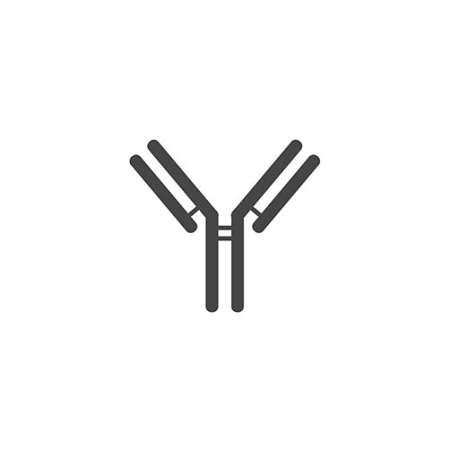Rat IgA Antibody - HRP Conjugated
Cat# OASA06770
Size : 0.5mg
Brand : Aviva Systems Biology
| Datasheets/Manuals | Printable datasheet for Goat Anti-Rat IgA Polyclonal Antibody - HRP Conjugated (OASA06770) |
|---|
| Predicted Species Reactivity | Rat |
|---|---|
| Product Format | Liquid. Phosphate buffered saline. |
| Clonality | Polyclonal |
| Isotype | Polyclonal IgG |
| Host | Goat |
| Conjugation | HRP |
| Application | ELISA|WB |
| :: | Preservative Stabilisers: 0.1% - Proclin 300 0.2% - Bovine Serum Albumin Antiserum Preparation: Antisera to rat IgA were raised by repeated immunisations of goats with highly purified antigen. Purified IgG was prepared from whole serum by affinity chromatography. |
| :: | Approx Protein Conc: IgG concentration 1.0 mg/ml Buffer Solutions: Phosphate buffered saline |
| Reconstitution and Storage | 2°C to 8°C |
| Predicted Homology Based on Immunogen Sequence | Rat |
| Concentration | 1 mg/ml |
| Specificity | IgA |
| Application Info | ELISA: 1/10,000 Western Blotting: 1/1,000 - 10,000 |
| Protocol Information | Citation: 1: Matsuo R, Garrett JR, Proctor GB, Carpenter GH. Reflex secretion of proteins into submandibular saliva in conscious rats, before and after preganglionic sympathectomy. J Physiol. 2000 Aug 15;527 Pt 1:175-84. PubMed PMID: 10944180; PubMed Central PMCID: PMC2270057. Species: Rat Experiment Name: 1. Assays of salivary proteins2. Electrophoresis of salivary proteins Experiment Background: 1. The levels of SIgA present in each saliva sample were quantified by enzyme linked immunosorbent assay (ELISA).2. Composition of salivary protein resolved by electrophoresis Experimental Steps: 1. Assays of salivary proteinsThis was performed on 96well microtitre plates which were coated overnight at 4 C with rabbit anti-rat IgA ( Ltd, Oxford, UK) diluted 1 in 2000 with 0•1 M sodium carbonate buffer (pH 9•6). Plates were washed 3 times in 0•1 M phosphate buffered saline (pH 7•0) containing 0•15 M sodium chloride and 0•1% Tween 20 (PBST) followed by water and then samples were placed on the coated plates and serially diluted in PBST.Samples were incubated on the plates for 2 h at 37 C then the plates were washed as above. SIgA purified from rat bile (Carpenter et al. 1998) was quantified by a modified Lowry protein assay (Petersen, 1977) and was used as a standard for quantifying the SIgA content of samples. Horseradish peroxidaselabelled rabbit anti-rat IgA antibodies ( Ltd), diluted 1 in 2000 in PBST, were incubated on the plate for 1 h at 37 C. Following incubation, plates were washed with PBST then incubated at room temperature in the peroxidase substrate tetramethyl benzidine (Sigma, Poole, UK) at a concentration of 3 mg ml-1 in DMSO and diluted 1:20 in 0•1 M sodium acetate buffer, pH 5•5. The reaction was terminated by the addition of 50 ul of 2 M H2SO4 and absorbance was measured at 450 nm in an automated microplate reader (BioRad Labs Ltd, Hemel Hempstead, UK). Total protein content of saliva samples was assayed by absorbance at 215 nm (Arneberg, 1971) using a human serum albumin/gamma globulin standard (Sigma). Peroxidase was assayed using the fluorogenic substrate dichlorofluorescin (Molecular Probes Europe, Leiden) which is converted to dichlorofluorescein (DCF) in the presence of hydrogen peroxide and peroxidase (Proctor & Chan, 1994). A standard curve of DCF (Sigma) was prepared and peroxidase activity was expressed in micromoles of DCF per minute (DCF units). Tissue kallikrein was assayed using the fluorogenic substrate D-valyl-leucyl-arginyl-7-amino-4-trifluoromethyl-coumarin (AFC; Enzyme Systems Products, USA) in the presence of soya bean trypsin inhibitor (Sigma) as previously described (Shori et al. 1992). A standard curve of the product 7-amino-4-trifluoromethyl-coumarin (AFC; Enzymes Systems Products) was prepared and tissue kallikrein activity was expressed in micromoles of AFC per minute (AFC units).2. Electrophoresis of salivary proteinsSaliva samples (equivalent to 40 ìg total protein) were reduced using dithiothreitol and loaded onto 4—20% SDS-PAGE separating gels containing Tris and glycine (Novex, Frankfurt, Germany) and electrophoresis was performed according to the manufacturer’s instructions. Resolved proteins were stained with a solution of 0•2% Coomassie Brilliant Blue R-250 (Sigma) in 25% methanol and 10% acetic acid and gels were destained with 10% acetic acid. In order to confirm that IgA was secreted in the form SIgA, that is IgA bound to secretory component (SC), electrophoretically resolved proteins were electroblotted onto 0•45 um nitrocellulose membranes (Anderman & Co., Kingston Upon Thames, UK) and probed with Peroxidase labelled rabbit anti-rat IgA or with unlabelled rabbit antirat SC (Universal Biologicals Ltd, Stroud, UK) followed by biotinylated goat anti-rabbit antibody (Sigma Ltd, Poole, UK) and avidin—biotin complex (Vector laboratories Ltd, Peterborough, UK). Binding was detected using enhanced chemiluminescence (ECL; Amersham, Pharmacia, Biotech, Aylesbury, UK) and photographic film as previously described (Carpenter et al. 1998). Number Of Protocols: 2 |
| Protein Name | Ig alpha-1 chain C region |
|---|---|
| Description of Target | GOAT ANTI RAT IgA:HRP |
| Uniprot ID | P01876 |
| Protein Size (# AA) | 131 |




